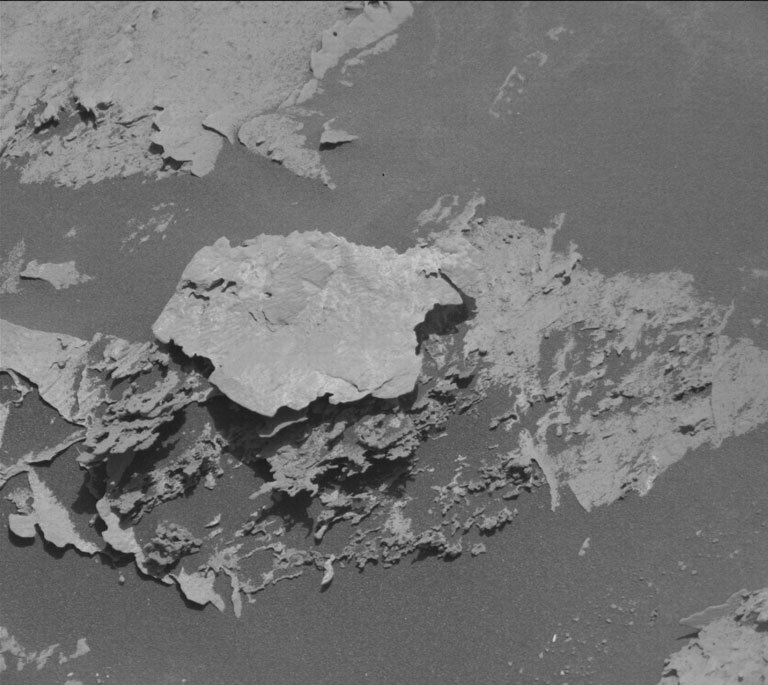2 min read

Today the team was greeted by a new workspace that included “tiger striped” rocks and an intriguing two-toned vein (shown in the Mastcam image above). One of the team’s main goals for today was to collect as much data as possible on these striped rocks and on the protruding veins that create the rocks’ distinctive appearance. The data we collect will help us interpret these unique geologic features and decipher how they relate to the long-term history of Gale crater.
During today’s planning session, the team scheduled two sols of rover activities for our new workspace. The first science block on sol 3115 will include a ChemCam RMI mosaic of a distant, uncharacteristically “dark” geologic unit and a Mastcam stereo mosaic of vein-filled rocks “La Couze.” Bedrock target “Coly” will also be analyzed with a Mastcam multispectral observation and a ChemCam LIBS observation. Three Navcam atmospheric observations were planned for the science block on sol 3116: a “line of sight” dust characterization image, a suprahorizon cloud movie, and a dust devil survey. The second science block will also include a ChemCam passive observation and a Mastcam documentation image on target “Excideuil.”
Standard REMS and DAN measurements were also planned for both sols to help monitor environmental conditions. Last but not least, APXS and MAHLI measurements on targets “Biras” and “Quinsac” will provide useful information on the material within the two-toned veins and striped rocks that typify this area. The team is excited to collect and analyze these new data to see what they can reveal about ancient Mars.
Written by Mariah Baker, Planetary Geologist at Center for Earth & Planetary Studies, Smithsonian National Air & Space Museum







